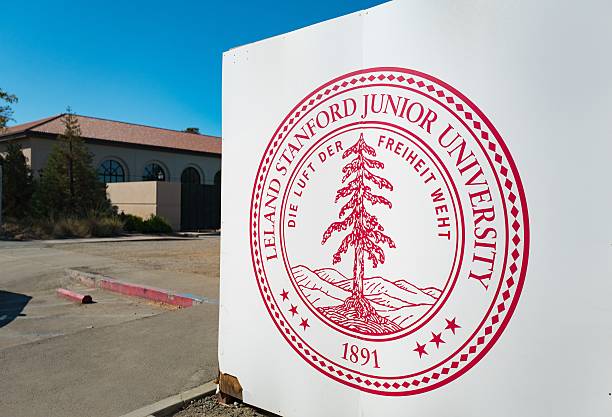Intro
As a freelancer, the importance of creating a great proposal cannot be overstated. Your proposal is your chance to show potential clients why you are the perfect fit for their project. But what makes a good proposal? In this blog post, we’ll share some key tips and tricks on how to craft the perfect freelancing proposal that will make your clients say “Yes”! From defining your value proposition to understanding the scope of the project, we’ll help you understand the essential elements of a winning proposal. So read on to learn how to create an irresistible freelancing proposal that will seal the deal!
1.Understand Your Client’s Needs
To craft a winning freelancing proposal, it is crucial to thoroughly understand your client’s needs. Take the time to research and gather information about their business, industry, and project requirements. This will help you tailor your proposal to address their specific needs and show that you have taken the time to understand their goals and challenges.
When understanding your client’s needs, consider the following:
- Conduct research: Research your client’s industry, competitors, and target audience. This will give you insights into their specific needs and help you position yourself as a valuable solution.
- Ask questions: Schedule a call or meeting with your client to discuss their project in detail. Ask questions to clarify any uncertainties and gain a deeper understanding of their goals, budget, and timeline.
- Identify pain points: Try to identify any pain points or challenges your client may be facing. By understanding their specific needs and concerns, you can propose solutions that directly address those issues.
- Determine objectives: Clearly define the objectives of the project. What does your client want to achieve? Understanding their goals will enable you to propose a solution that aligns with their desired outcomes.
- Consider the target audience: Who is the project intended for? Understanding the target audience will help you tailor your proposal and deliverables to meet their specific needs and preferences.
By understanding your client’s needs, you can craft a proposal that speaks directly to their goals and challenges. This will show that you are invested in their success and increase your chances of winning the project. So, take the time to thoroughly understand your client’s needs before writing your proposal.
2.Craft a Compelling Executive Summary
Crafting a compelling executive summary is essential to grabbing the attention of potential clients and convincing them to read the rest of your freelancing proposal. This is your chance to make a strong first impression and highlight the key aspects of your proposal that make you the perfect fit for the project.
Here are some tips to help you create a compelling executive summary:
- Keep it concise: The executive summary should be a brief overview of your proposal, so aim to keep it concise and to the point. Highlight the most important details without going into too much detail.
- Grab their attention: Start your executive summary with a compelling hook that grabs the reader’s attention and makes them want to continue reading. This could be a bold statement, a statistic, or a thought-provoking question.
- Summarize your value proposition: Clearly and succinctly state what value you bring to the project and how you can help the client achieve their goals. Focus on the unique skills, experience, or expertise that set you apart from other freelancers.
- Address the client’s needs: Tailor your executive summary to address the specific needs and goals of the client. Show that you have taken the time to understand their challenges and how your proposal can provide solutions.
- Use engaging language: Use language that is engaging and compelling to captivate the reader’s attention. Be confident and persuasive in your tone, showcasing your passion and expertise.
Remember, the executive summary is your chance to make a strong first impression and pique the interest of potential clients. By following these tips and crafting a compelling executive summary, you’ll increase your chances of getting clients to say “Yes” to your freelancing proposal.
3. Detail Your Approach
When detailing your approach in your freelancing proposal, it’s important to showcase your unique strategy and how you plan to tackle the project at hand. This is your chance to demonstrate your expertise and creativity, setting yourself apart from other freelancers. Here are some key points to include when detailing your approach:
- Methodology: Explain the step-by-step process you will follow to complete the project. Break down the tasks and deliverables, highlighting how each one contributes to the overall goal.
- Unique Selling Point: Emphasize what sets your approach apart from others. Highlight your unique skills, techniques, or tools that will help you deliver outstanding results.
- Communication and Collaboration: Explain how you will communicate with the client throughout the project. Discuss the frequency of check-ins, progress updates, and feedback sessions to ensure a smooth collaboration.
- Flexibility and Adaptability: Highlight your ability to adapt to changing circumstances and handle unexpected challenges. Show your willingness to revise your approach if needed to ensure client satisfaction.
- Milestones and Deliverables: Outline the key milestones and deliverables that the client can expect throughout the project. Be clear about what they will receive and when, to manage their expectations effectively.
By detailing your approach, you demonstrate your professionalism, expertise, and dedication to delivering exceptional results. This will instill confidence in potential clients and increase your chances of winning the project. So take the time to explain your approach clearly and concisely, showcasing your unique value proposition.
4. Offer a Realistic Timeline
Offering a realistic timeline is crucial when it comes to crafting a successful freelancing proposal. Clients want to know when they can expect their project to be completed, and providing them with a clear timeline shows that you are organized, reliable, and dedicated to delivering on time. Here are some key points to consider when offering a realistic timeline:
- Break down the project: Start by breaking down the project into smaller tasks or milestones. This allows you to allocate time for each step and gives the client a clear understanding of how the project will progress.
- Consider your availability: Take into account your current workload and any other commitments you may have. Be realistic about how much time you can dedicate to the project and factor that into your timeline.
- Buffer time: It’s always a good idea to include some buffer time in your timeline. Unexpected delays or challenges can arise, so it’s important to account for them in your planning. This ensures that even if things don’t go exactly as planned, you still have some flexibility to meet the deadline.
- Communicate with the client: During the proposal process, communicate with the client about their expectations and any time constraints they may have. This will help you tailor your timeline to their needs and ensure that it aligns with their desired timeframe.
- Be transparent: Transparency is key when offering a realistic timeline. If you anticipate any potential delays or challenges, be upfront with the client about them. Managing their expectations from the start will help avoid any misunderstandings or frustrations down the line.
By offering a realistic timeline, you are setting clear expectations with the client and demonstrating your commitment to delivering on time. This level of transparency and professionalism will instill confidence in the client and increase your chances of winning the project. So take the time to carefully consider and communicate your timeline, and you’ll be one step closer to sealing the deal.
5. Breakdown the Cost
When it comes to freelancing, one of the most crucial aspects of your proposal is breaking down the cost. This section provides you with an opportunity to outline the pricing structure and ensure that both you and your client are on the same page. Here’s how you can effectively break down the cost in your proposal:
- Itemized list: Create an itemized list that clearly outlines each component of the project and its associated cost. This will help the client understand what they are paying for and avoid any misunderstandings.
- Hourly rate or fixed fee: Depending on the nature of the project, you can either charge an hourly rate or propose a fixed fee. Be transparent about how you arrived at the pricing and justify it based on your skills, experience, and the scope of the project.
- Additional expenses: If there are any additional expenses that the client needs to cover, such as software licenses or travel costs, make sure to include them in the breakdown. Be clear about who will be responsible for these expenses.
- Payment terms: Specify your payment terms, such as the percentage of the total cost that needs to be paid upfront and the schedule for subsequent payments. It’s essential to be clear about your expectations to avoid any payment-related issues.
- Provide options: If you offer different packages or pricing tiers, clearly present them in your breakdown. This gives the client flexibility and allows them to choose the option that best fits their needs and budget.
Remember, transparency is key when breaking down the cost. Use clear and concise language to avoid any confusion and provide your client with a detailed understanding of how their investment will be allocated. By effectively breaking down the cost, you will not only instill confidence in your client but also demonstrate your professionalism and commitment to delivering value. So, don’t overlook this section of your proposal and take the time to present the cost breakdown clearly and compellingly.
Read More: What is freelancing and How to start to earn Money from it:
6.Address Any Potential Issues or Concerns
Addressing potential issues or concerns is an important step in crafting a winning freelancing proposal. By proactively addressing any potential roadblocks, you can demonstrate your problem-solving skills and show the client that you are prepared to handle any challenges that may arise. Here are some tips on how to address potential issues or concerns in your proposal:
- Anticipate objections: Put yourself in the client’s shoes and try to anticipate any objections they may have. Common concerns could include budget constraints, timeline constraints, or doubts about your ability to deliver. Address these objections head-on in your proposal, providing clear and compelling responses that alleviate any worries the client may have.
- Offer solutions: If you anticipate any potential issues or concerns, be proactive in offering solutions. Show the client that you have thought through different scenarios and have a plan in place to handle them. This level of preparedness will give the client confidence in your ability to navigate any challenges that may arise during the project.
- Provide examples or case studies: If you have encountered similar issues or concerns in previous projects, highlight those experiences in your proposal. Share how you successfully addressed those challenges and achieved positive outcomes. This will demonstrate your expertise and problem-solving abilities, further reassuring the client that you are the right fit for their project.
- Showcase testimonials or reviews: If you have received positive feedback from previous clients, consider including those testimonials or reviews in your proposal. This will provide social proof of your abilities and give the client peace of mind knowing that others have had a positive experience working with you.
- Highlight your communication skills: Communication is key in any client-freelancer relationship. Address the importance of open and transparent communication in your proposal, assuring the client that you will keep them informed every step of the way. Emphasize your responsiveness and availability, showing the client that they can rely on you to address any concerns or issues that may arise during the project.
By proactively addressing potential issues or concerns, you can build trust and confidence with your client. Show that you are prepared, flexible, and ready to handle any challenges that may come your way. By doing so, you increase your chances of winning the project and securing a successful freelancing gig. So, take the time to carefully consider and address potential issues or concerns in your proposal, and set yourself up for success.
8.Include Samples of Your Work
One of the most effective ways to showcase your skills and expertise in your freelancing proposal is to include samples of your work. This allows potential clients to see firsthand the quality of your work and get a sense of what you can deliver.
When selecting which samples to include, choose ones that are relevant to the project you are proposing for. This could be previous work in a similar industry or examples that demonstrate your ability to handle similar tasks. Be sure to choose samples that highlight your strengths and align with the client’s needs.
Consider creating a portfolio website or using platforms like Upwork or Fiverr to showcase your work. These platforms provide a space for you to upload your portfolio, making it easily accessible for potential clients to view.
In addition to providing samples, it can also be helpful to include testimonials or reviews from previous clients. This adds an extra layer of credibility and demonstrates your track record of delivering quality work. If you have received positive feedback on platforms like Upwork or Fiverr, be sure to include those reviews as well.
Remember, the goal is to make your work samples visually appealing and engaging. Use high-quality images, videos, or interactive elements to showcase your work in the best possible light. Be selective and choose only your best work to include.
By including samples of your work in your freelancing proposal, you are providing concrete evidence of your skills and abilities. This helps to build trust and confidence in your potential client, increasing your chances of securing the project. So take the time to curate and present your work samples effectively, and let them speak for themselves.
9. Follow Up and Close the Deal
After submitting your freelancing proposal, it’s important to follow up and close the deal with your potential client. Don’t sit back and wait for them to reach out to you – take the initiative and show your interest and dedication to their project. Here are some key tips to help you follow up effectively and seal the deal:
- Give it some time: Give your client a reasonable amount of time to review your proposal before following up. Depending on the project’s urgency, a week or two should be sufficient.
- Be prompt and professional: When following up, make sure to send a polite and professional email or message. Express your gratitude for the opportunity to submit a proposal and mention that you wanted to check in and see if they had any questions or needed further information.
- Show enthusiasm and confidence: Reinforce your interest in the project and show your enthusiasm for working with the client. Highlight the unique value you can bring and reiterate how your skills and experience align with their needs.
- Address any concerns: If the client has expressed any concerns or questions in their project description or during the initial communication, take the opportunity to address them in your follow-up. Offer solutions or clarifications that can help alleviate their concerns and build confidence in your abilities.
- Provide additional samples or references: If you feel it will strengthen your case, consider including additional samples of your work or references from previous clients who can vouch for your skills and professionalism.
- Set a deadline for their decision: In your follow-up message, kindly request a decision timeline from the client. This will show that you value your time and allow you to plan accordingly.
- Be persistent but not pushy: If you don’t hear back after your initial follow-up, don’t be discouraged. Send a polite reminder after a reasonable amount of time has passed. However, avoid being pushy or pestering the client. It’s essential to strike a balance between persistence and respect for their time and decision-making process.
Remember, following up is a crucial part of the freelancing process. It demonstrates your professionalism, dedication, and interest in the project. By following these tips and staying proactive, you increase your chances of closing the deal and landing your next freelancing gig. So don’t hesitate – reach out, show your enthusiasm, and seal the deal!
CONCLUSION
In conclusion, mastering the art of crafting a compelling freelancing proposal is crucial in securing lucrative opportunities and successfully closing deals. By implementing these valuable tips, you can significantly enhance your chances of nailing your freelancing proposals.
With a polished and professional approach, you’ll be able to showcase your skills, expertise, and unique value proposition to potential clients. This will not only leave a lasting impression but also increase the likelihood of sealing the deal.
Remember to tailor each proposal according to the specific client’s needs and requirements, highlighting how you can address their pain points effectively. Additionally, emphasize your experience, qualifications, and past successes to instill confidence in prospective clients.
By following these SEO-friendly strategies for creating persuasive proposals that resonate with clients’ expectations, you’ll position yourself as a standout freelancer in today’s competitive market.



















Leave a comment